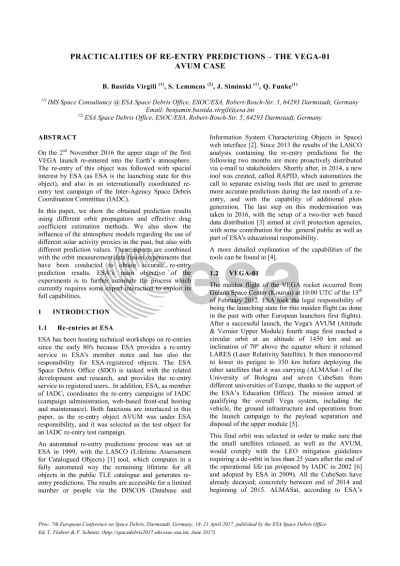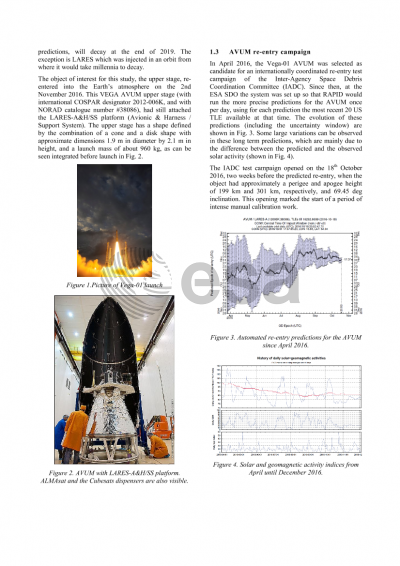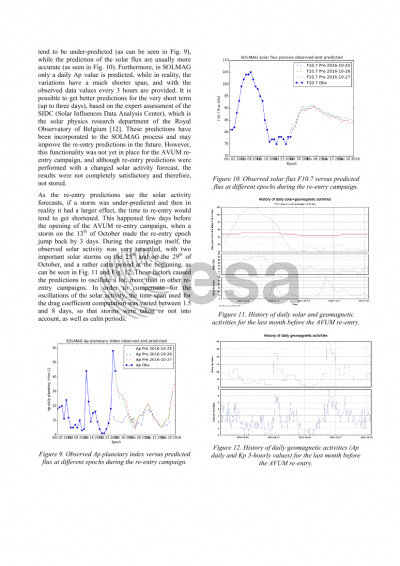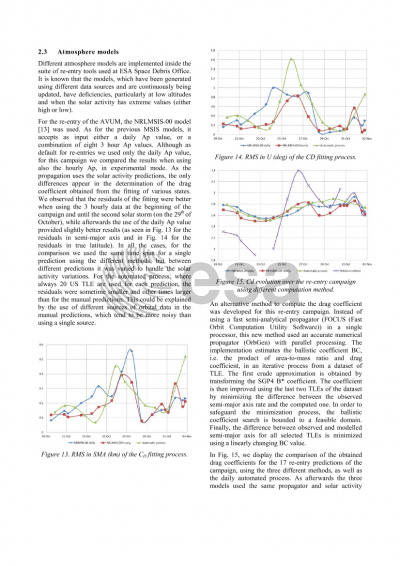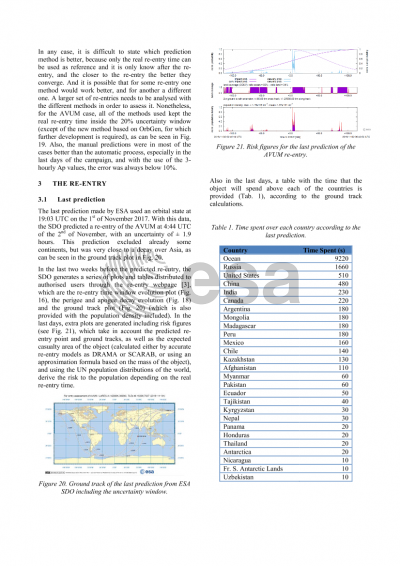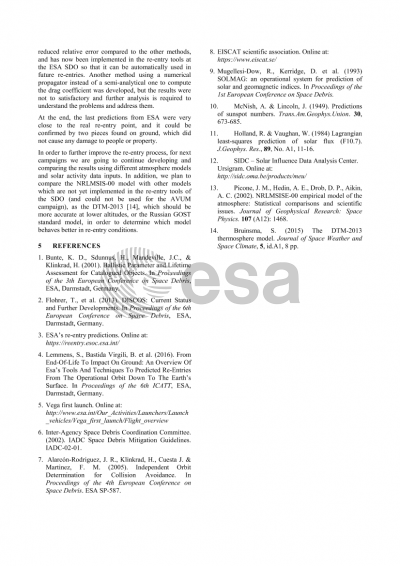Document details

Abstract
On the 2nd November 2016 the upper stage of the first VEGA launch re-entered into the Earth’s atmosphere. The re-entry of this object was followed with special interest in ESA (as ESA is the launching state for this object), and also in an internationally coordinated re-entry test campaign of the Inter-Agency Space Debris Coordination Committee (IADC).
The test campaign was opened two weeks before the predicted re-entry, and during this time ESA handled observations of the object from different sensors and tried to combine it in the most efficient way, while some attempts to obtain more data from optical sources where unsuccessful due to bad weather. The observed solar activity was very unsettled, with two important solar storms occurring during the campaign, followed by rather calm periods. All these factors set challenges to any re-entry prediction process. Different ways to improve the process under such conditions could be analysed by ESA for this particular case.
In this paper, we show the obtained prediction results using different orbit propagators and effective drag coefficient estimation methods. We also show the influence of the atmosphere models regarding the use of different solar activity proxies in the past, but also with different prediction values. These aspects are combined with the orbit measurement data fusion experiments that have been conducted to obtain accurate re-entry prediction results. ESA’s main objective of the experiments is to further automate the process which currently requires some expert interaction to exploit its full capabilities.
Preview
